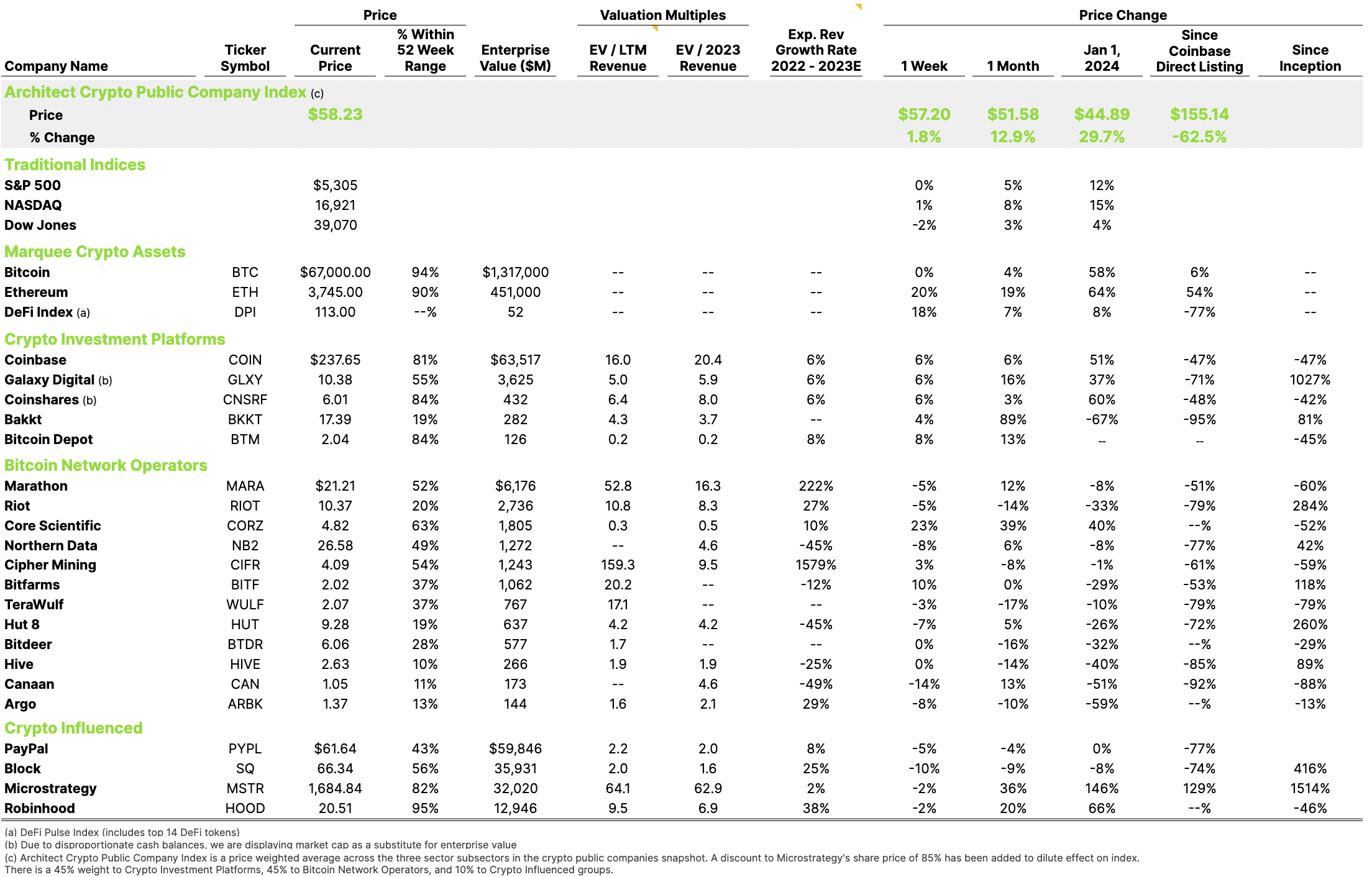If the U.S. Regulatory Environment shifts from being the primary roadblock to a positive supporter, by 2030, 66% of S&P 500 companies will own a blockchain or crypto product or service that is actively being used by their customers.
This week was the most encouraging signal for U.S. regulatory and crypto relations with positive developments on:
- Listings of Spot Ether ETFs -> further appetite to make the crypto asset class available to U.S. investors
- Senate repeal of SAB 121 -> Senate vote of 60-38, indicating bipartisan support to strike a crypto-negative accounting rule
- House passing of FIT21 (Financial Innovation and Technology for the 21st Century Act) -> bill that would establish a comprehensive digital assets regulatory framework including customer protections
Positive U.S., Bipartisan, Congressional, and Regulatory activity in the crypto industry is both unprecedented and much-welcomed.
Architect Partners spoke at this week’s Digital Asset Week California event in San Francisco on “The Future of Crypto as an Institutional Asset Class” panel where we discussed the positive impact of the BTC ETFs (it’s less than what most of the industry believes), if there will be a similar impact with Spot Ether ETF (of course, even with the non-staking component), what other institutional use cases are gaining real traction today (payments, tokenization of RWA) and what is the most significant deterrent to institutional adoption (regulation, ease of use, reputational risks).
Public filings for holdings of Investment Funds (13F) from Q1 were released, which is the first time we are seeing who the investors of BTC ETFs are. As of Mar 31, over 600 professional investment firms reported owning over $3.5B worth of BTC ETFs. As expected, holders include the largest global TradFi institutions – Morgan Stanley, JPMorgan, Wells Fargo, UBS, BNP Paribas, RBC – and asset managers – Millenium ($1.9B), Boothbay ($377M), Schonfeld ($248M), Pine Ridge ($206M), Aristeia Capital ($163M), Graham ($101M), CRCM ($97M), and Fortress ($54M).
In the first of another expected trend, the state of Wisconsin’s Investment Board announced a $160M+ investment into BTC ETFs. I anticipate all 50 states will have a BTC ETF allocation within 24 months.
This U.S.-based participation by the world’s most sophisticated investors is proof of how critically important it is for our industry to prioritize making the adoption and use of crypto assets easy for all market participants.
The uncontrollable part of that statement is the regulatory environment, which is why the Spot Ether ETF news is so significant. Looking a level deeper, Ether – the token that facilitates the Ethereum Layer1 ecosystem – has historically been considered a utility token and therefore treated more as a commodity that is used in everyday activities instead of a security that represents a store of value with future appreciation potential.
A Spot Ether ETF’s existence represents a structural shift in Ether’s market positioning as a pure institutional investment asset as holders will own Spot Ether ETFs with the sole expectation of value appreciation. As currently structured, holders of the Spot Ether ETF will not participate in activities related to the operating of the Ethereum network, i.e. staking, that direct holders of ETH do participate in.
This is a very significant statement for the go-forward prospects of how all institutions will approach their crypto and digital asset strategies as the structure more clearly aligns with why an asset is owned or held (store of value, medium of exchange, operating the network).
Notable is the recent naming of a new, high-performing trade – BEGS (Bitcoin, Ether, Gold, Silver) – that represents investments with no cash flow and is currently at all-time highs. Normalization of crypto assets in investment vernacular has a real impact on adoption.
Material U.S. political progress to our industry will transform the speed at which institutions MUST adopt the technology and its multitude of use cases or face extinction. A U.S. regulatory framework creates a velocity of innovation environment that accelerates an institution’s buy-over-build decision-making and drives a robust M&A environment. This bodes well for crypto and digital asset companies building high-quality, institutional-grade products and services.
I will be bold and say that in May 2024, our industry officially transitioned from #TheGreatPurge and entered into #TheGreatSurge.
Architect Partners will be at Consensus in Austin from May 27 – Jun 1. Consensus has historically been the most important U.S.-based blockchain and crypto conference and we’ll give on-the-ground perspectives next week.
